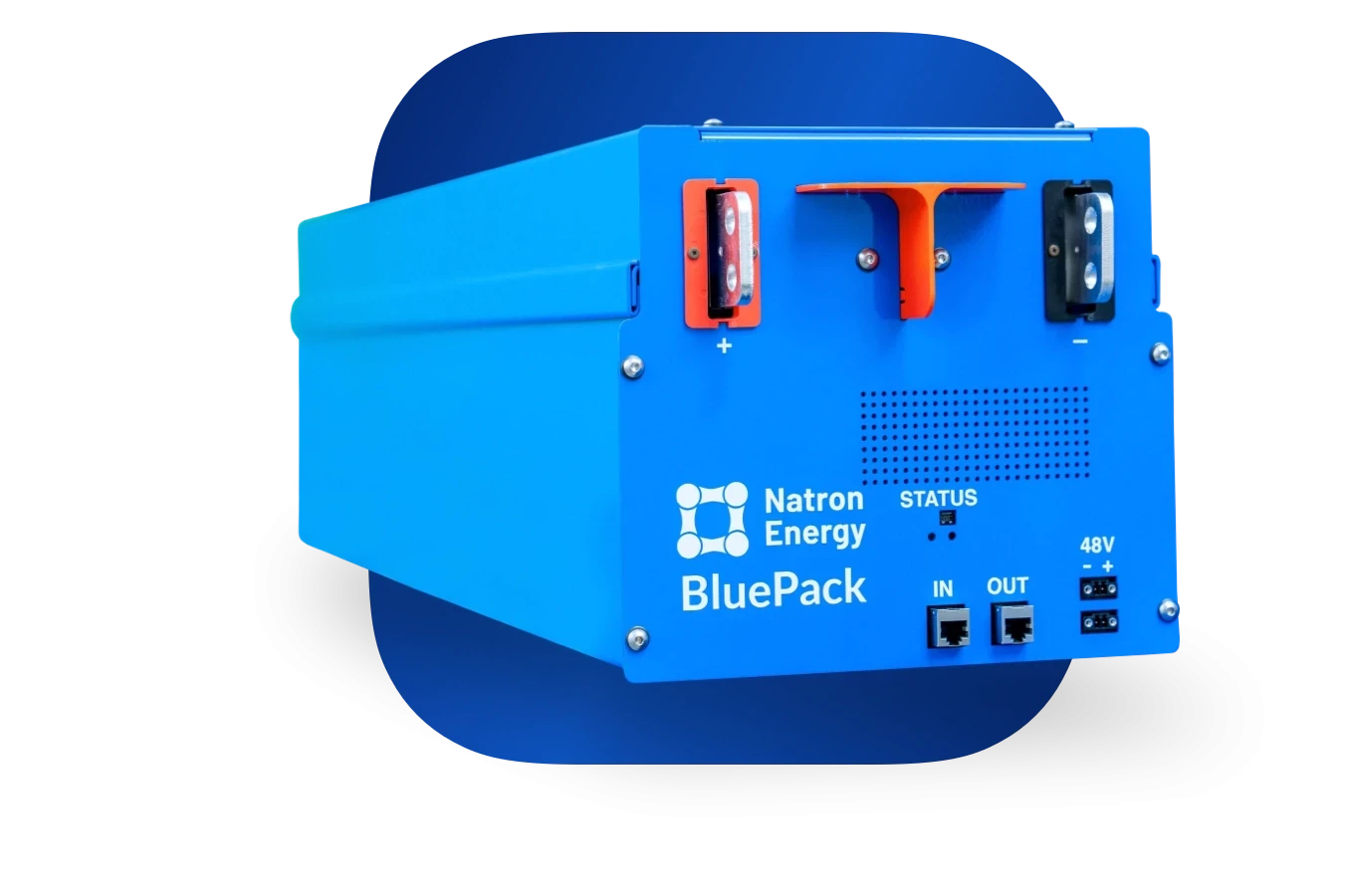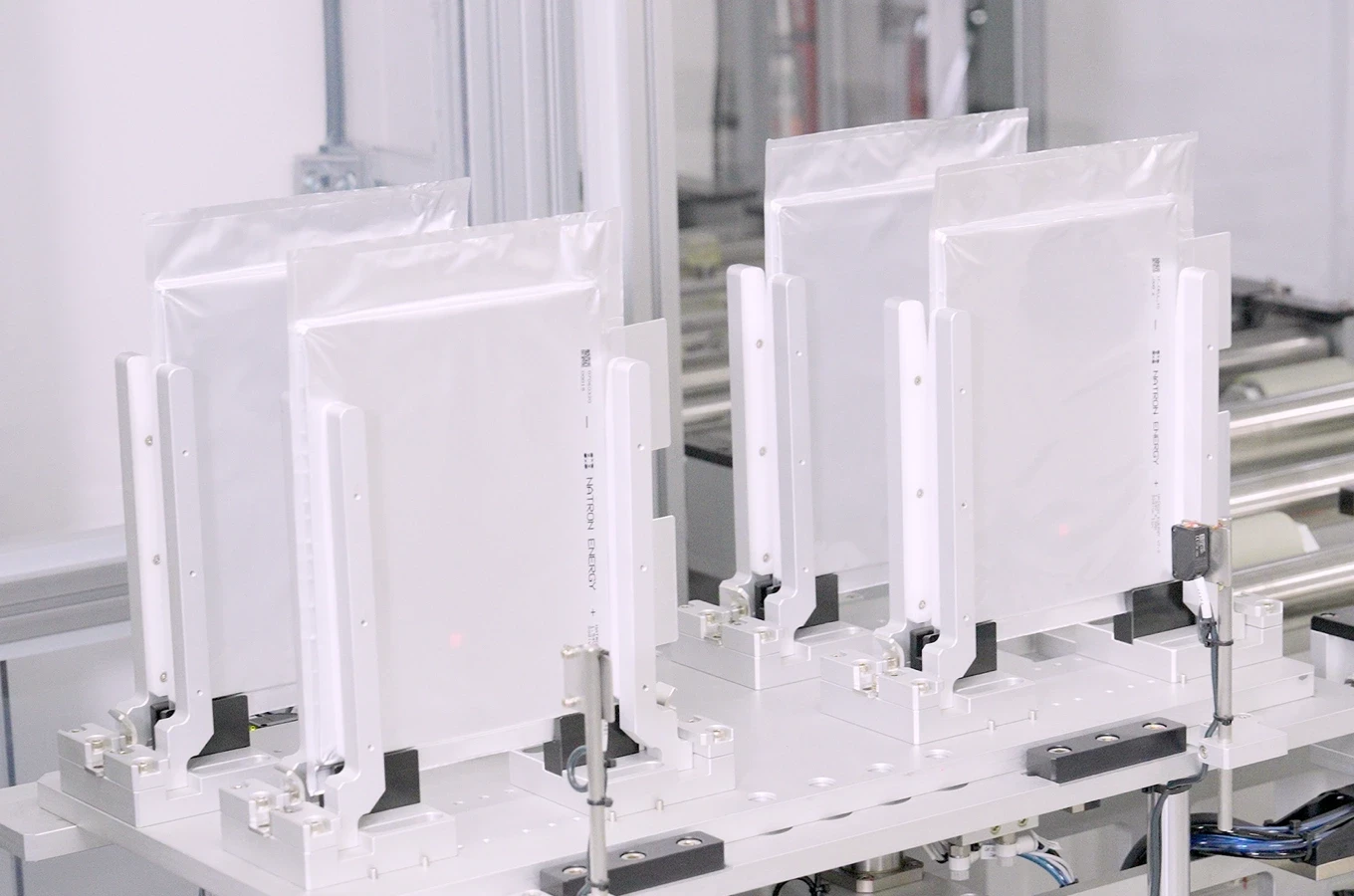A Big Blue Breakthrough.
Like traditional lithium-ion and lead acid batteries, Natron battery cells have a positive electrode (cathode), a negative electrode (anode), a porous separator between the two electrodes, along with a paste-like, non-aqueous electrolyte that enables charge (ions) to pass back and forth between the electrodes. The atoms in Prussian blue particles are arranged in large, cubic cages with empty spaces (pores) between them. Since the pores in Prussian blue are larger than sodium ions, they are able to rapidly absorb and release those ions in a process called intercalation. This rapid intercalation is the key benefit of Natron’s sodium-ion battery technology and sets it apart from other conventional storage materials found in lithium-ion and lead acid cells.

